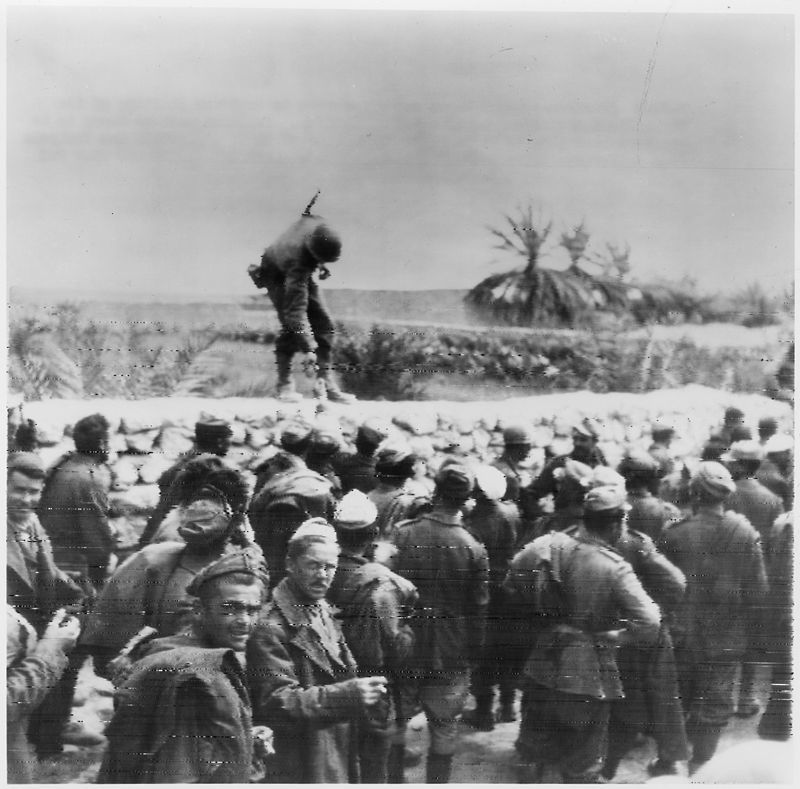The Battle of El Guettar took place from March 23 to April 3, 1943, in El Guettar, Tunisia, as a part of the Allied campaign to take North Africa. The battle was fought between American forces against German and Italian forces that were working together. The Americans had just been handed tough losses at the Battle of Kasserine Pass in late February by German field marshal Erwin Rommel. But before reaching a complete victory, Rommel had to turn his attention to the quickly approaching British Army, leaving the Americans holding their position but with less men and less confidence. American military commanders took swift action to fix their shortcomings at Kasserine Pass by improving their tactics and discipline, as well as changing up the command in Tunisia. Now under the command of George Patton, the Americans began to plan an offensive move against the Germans.
On March 18, 1943, the U.S. 1st Ranger Battalion commanded by William O. Darby took the town of El Guettar in central Tunisia. The Rangers had spotted Italian strong points in the area and attacked them by surprise, securing the town and allowing for an American advance towards the Tunisian coast. If the Americans succeeded in this advance, the German forces in southern Tunisia would be cut off from the rest of their army, making them extremely vulnerable to the British closing in on them. To try and stop the Americans from cutting them off, the Germans sent the 10th Panzer Division to attack El Guettar. On March 23, the 10th Panzer Division began attacking the town from the southeast and managed to break the American front defending the outskirts of the city. Once the Germans were halfway to El Guettar, their forces split to attack from the north and northwest in an attempt to take out American artillery. As German tanks advanced toward the town, they ran into an American minefield, which destroyed eight of them in the process. Simultaneously, the Americans fired heavy artillery and anti-tank weapons on the advance, taking out 30 German tanks total. The Germans then retreated several miles back, giving the Americans time to regroup and strategize.
Soon after, American troops intercepted German communications indicating that a new attack would be taking place in the late afternoon. American soldiers were able to adequately prepare for the incoming attack, and as soon as German forces were within range, U.S. artillery bombarded the Panzer Division. Along with the heavy fire, the Germans couldn’t make it past the American infantry and rangers, who managed to hold them off for several hours. Eventually it became clear to the Germans that they would not be able to break through to El Guettar, and they ended the attack and retreated. Thus, after their weak performance at the Battle of Kasserine Pass, the American forces in Tunisia redeemed themselves at El Guettar. Despite facing a formidable opponent in the 10th Panzer Division, the U.S. Forces under George Patton were able to achieve their first victory in Tunisia.
Suggested Reading:
American Battle Monuments Commission: El Guettar
Leo Barron, Patton’s First Victory: How General George Patton Turned the Tide in North African and Defeated the Afrika Korps at El Guettar (Rowman & Littlefield, 2017)








